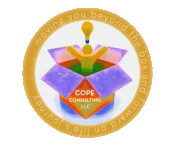In 1971, the year I was born, Dr. Abraham Maslow wrote:
“... the goal of education is helping the person to become the best he/she is able to become. (p. 169) Education is learning to grow and learning what to grow toward. (p. 178) Another goal of schools and teachers should be pursuing is the discovery of vocation, of one’s fate and destiny. Part of learning who you are, part of being able to hear the inner voices, is discovering what it is that you want to do with your life. (p.185) –The Farther Reaches of Human Nature, A.H. Maslow 1971
I remember sitting on my bed contemplating my 12 short years on this planet and realizing that my calling was to help every hurting child. I had no idea that all of my life experiences, leading up to that point of realization, and the adventure that was still to come, would be filled with all of the lessons that I needed to realize my true calling.
When I recently read Maslow’s words for the first time, it brought my learning journey into perspective. I’m lucky to have found my “voice of vocation” that Maslow refers to. I am proud to be an educator and believe that this was what I was put on this earth to do--my life’s purpose and vocation are one.
My inner compass as an educator, has led me to simply keep learning, growing, and moving forward toward my goal. The world is my teacher and every person, child or adult that I encounter teaches me valuable lessons and every daunting obstacle challenges me and propels me forward.
After 15 years teaching elementary school at Title I schools for Napa Valley Unified School District, serving our neediest population--striving students and English learners, my greatest challenge was presented that would ultimately connect all of the dots. The Assistant Superintendent, Elena Toscano, was seeking to hire a GATE Teacher on Special Assignment and asked if I would consider the position. My initial thought was that I was not qualified. I considered my calling to be helping the neediest, but with some assurance that the position would come with training so I could better understand how to reach and support ALL students, I took on the task.
As I embarked on GATE certification training and learned about the profiles of gifted learners two important realizations came to me. This first came during an introduction of the six profiles of gifted learners--Successful, Challenging, Twice-Exceptional, Underground, Autonomous, and Drop-Out. I realized that whether they were labeled gifted or not, these were the same profiles of ALL the students I had taught over the years! The second realization came as I studied the purpose of gifted education--providing young people with maximum opportunities for self-fulfillment through the development and expression of areas where superior potential may be present. Doesn’t that sound like Maslow? Shouldn’t this be the purpose of education for ALL learners?
Traditionally in public education, categorical funding, mostly focused on remediating the deficit of learners, rather than building on their strengths, has kept us from making important connections between departments, keeping all of our leaders and their teams in “silos”. These silos serve as obstacles to creating a cohesive community, able to support ALL learners. How would we break down those silos?
It was 2010 and the dots were starting to connect. GATE funding had been swept into the general fund so I was not held to the same categorical compliance rules as my other colleagues. NVUSD had 18,000 students and 1,900 were identified for Gifted Education, and $100,000 was set aside, which included a portion of my salary and that of a support person. In order to make sure that this funding impacted students, we were going to have to think “outside of the box”, creating a vision that could move beyond qualification and get resources where they were most needed and multiply opportunities to provide layers of support.
A new vision was inspired, along with a new name for our Napa Valley Unified GATE program — Advanced Learner Programs and Services — ALPS! The premise of the ALPS system would be that every student deserves educational resources to unlock his or her full potential so they keep moving forward academically within the school day.
Equity versus equality is at the heart of this program which means, that when an advanced or striving learner shows a need, access to resources and support should be made available. Qualification should not determine intervention. Instead, our slogan became, “Every child should get what every child needs.”
How did we begin to realize our vision?
1. Hired a TOSA and support person dedicated to coordinating the program.
2. Raised awareness of student needs through analysis of multiple measures for every 3rd grade student across the district.
3. Layered Communication
● Paid ALPS Liaisons at each site
● Monthly “Golden Nugget” Trainings provided to site liaisons by TOSA
● Established a tri-annual newsletter
● Provided 2 events to educate parents and share site, district, and community resources
● Created a website for teachers and parents www.nvusd.k12.ca.us/alps
4. Added “Advanced Learners “to the district SST process. TOSA provided targeted differentiation support at meetings.
5. Developed partnerships to stretch dollars, increase outreach, support social-emotional needs, and ensure equitable access of English Learners, and connect to special education intervention and supports.
The key to the ALPS program success is flexibility, and when we have the ability to give support and resources where and when it is needed to schools, teachers, and families, it brings us all together out of our silos into a community where we can make the impossible, possible!

 RSS Feed
RSS Feed

